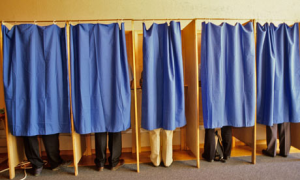Watts Working
Need Help Deciphering Changes To the PJM Demand Response Market? You Are Not Alone
Luke McAuliffe | February 8, 2012 at 2:45 pm
 I recently led a well-attended webinar for Demand Response participants in the PJM region. Its intent was to inform people about the implications that are occurring as a result of PJM’s transition to a “capped” or “pure forward capacity” market. In short, there is only so much capacity available at certain price levels on an annual basis from now on, whereas in the past there was an unlimited amount of Demand Response that could be enrolled in the market and everyone received the same price points.
I recently led a well-attended webinar for Demand Response participants in the PJM region. Its intent was to inform people about the implications that are occurring as a result of PJM’s transition to a “capped” or “pure forward capacity” market. In short, there is only so much capacity available at certain price levels on an annual basis from now on, whereas in the past there was an unlimited amount of Demand Response that could be enrolled in the market and everyone received the same price points.
What I found intriguing was the responses we received for the polling questions on our webinar. The vast majority (73%) of participants admitted they did not know or were very unsure of how the impending market changes could/would affect the revenue stream they earn through a Curtailment Service Provider (CSP). Naturally this is why they attended the webinar, but let’s pause and think about this for a second. There was over 11,000MWs enrolled in the PJM market last year, and the value for each MW was $40,150 in almost all regions. 11,000 x $40,150 = A lot of money!!! With so much revenue at stake, it is no wonder we had such a high turnout, BUT it also suggests there are not many places that customers can get 3rd party advice or information about these important programs that can be very lucrative to their bottom line.

The next polling question was even more fascinating (to me anyway), in that 50% of folks stated that the most important factor in selecting a CSP was “revenue splits” (which was followed by “market expertise,” which correlates nicely with the answers in the first polling question). I think this poll may indicate a change in people’s perception regarding Demand Response services. In my experience, if this question was asked a couple of years ago the most important factor to customers would have been almost unanimously the “revenue split” option. However, as time goes on and folks become more comfortable with reducing load for an economic benefit, these results suggest to me that perhaps customers are starting to see more value from these programs.
While it is nice to get a high “split” for participating in, say, an Emergency Load Response Program, the value learned from changing behaviors by reducing energy can be replicated for energy management strategies (which can lower energy costs) and for participation in other Demand Response programs where they can earn even more revenue. Thus, partnering with a CSP who can provide “market expertise”, “technology” and “breadth of services” (combined 40% in this poll) can benefit a participant much more than enrollment in only one program.
If people don’t understand what’s going on in PJM (and there are millions of dollars at stake) and they are looking for “market expertise,” then maybe there is a market for more than what demand response providers are providing, namely, objective advice – and an effective way to act on it. And that is exactly what we deliver at World Energy. Learn more by downloading our DR Buyer’s Guide at http://www.worldenergy.solutions/whitepapers/getting-more-from-dr-a-buyers-guide-for-demand-response/.


 Twitter
Twitter
 LinkedIn
LinkedIn
 RSS Feed
RSS Feed
These polling results are interesting. How many people were on the webinar that voted? Do a lot of customers participate in more than one program?
Hi Aaron:
Thank you for the post. There were in excess of 100 people on the webinar. Yes, many companies do participate in more than one Demand Response program. In fact, as time goes on we are seeing more and more folks participating in Economic and Synchronous Reserves. Since the infrastructure is in place already (with participation in Emergency Load Response) it makes sense to “dip ones toe” in the water and try out another program that can drive in greater revenue and savings!
hello ,this is my site